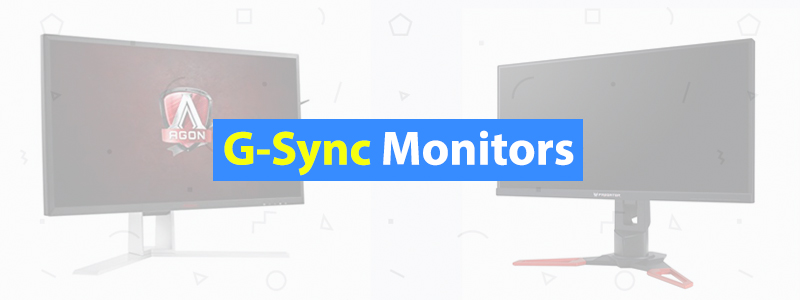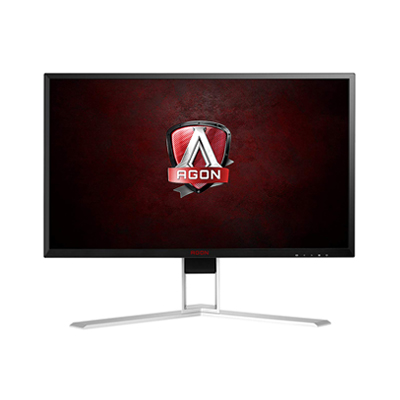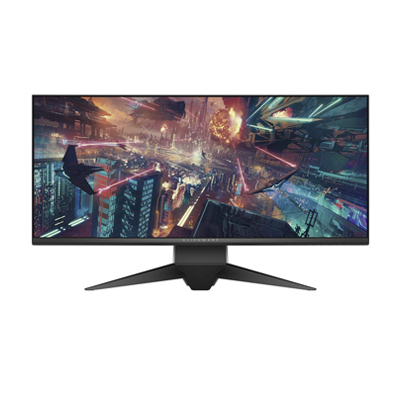5 Best G-Sync Gaming Monitors
Unlike with FreeSync monitors, the list of the best G-Sync monitors is short. Still, despite having a narrower pool to choose from, shopping for one won’t be any easier, especially if you want something that’s also great for all-around use.
With this guide, we’ll make things easier for you. In this guide, you’ll find the top G-Sync monitors currently out on the market, allowing you to choose from an already curated list. The products listed here range from a 4K monitor to a beastly ultrawide monitor. We also included a budget-friendly option in case you have a limited budget.
| Budget |
|---|
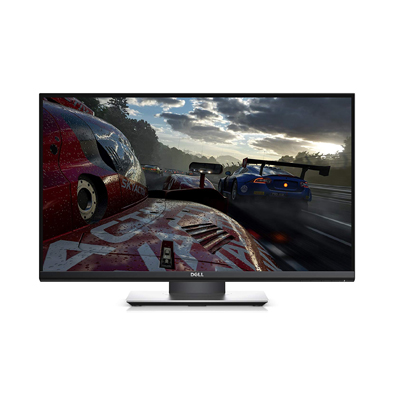 |
| Dell S2417DG |
| 4.0/5.0 |
| Size: 24 in |
| Resolution: 2560 x 1440 |
| High native refresh rate, excellent response time and good brightness. |
| Check Amazon |
| Best Value |
|---|
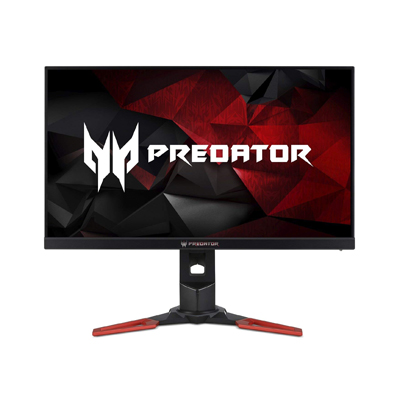 |
| Acer Predator XB271HK |
| 4.3/5.0 |
| Size: 27 in |
| Resolution: 3840 x 2160 |
| 4K UHD resolution, good out-of-box color accuracy, wide viewing angles. |
| Check Amazon |
| Top Pick |
|---|
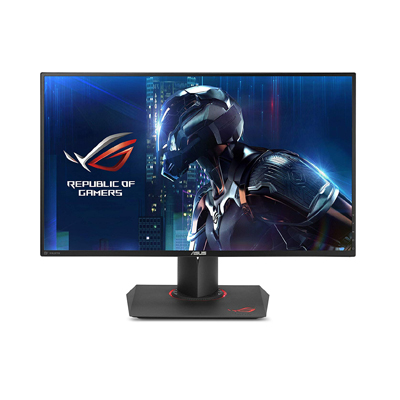 |
| Asus ROG Swift |
| 4.5/5.0 |
| Size: 27 in |
| Resolution: 2560 x 1440 |
| Great picture quality, having good color accuracy and wide viewing angles. |
| Check Amazon |
What is G-Sync?
In terms of functionality, Nvidia G-Sync is essentially the same as AMD FreeSync. It allows for a smoother gaming performance by synchronizing or adapting the monitor’s refresh rate to the graphics card’s output, reducing screen tearing and stuttering.
However, G-Sync is implemented differently than FreeSync and is considered the more premium of the two adaptive sync technologies. The first thing you need to know is that G-Sync monitors are more expensive than FreeSync monitors, with the best ones selling for over $700. This is because G-Sync monitors use proprietary hardware and require manufacturers to pay Nvidia for licensing. On the other hand, FreeSync, as its name suggests, is a more open technology.
When it comes to performance, G-Sync only works with Nvidia graphics cards and it is more stable and consistent. It simply works. With FreeSync, performance varies from monitor to monitor, especially concerning FreeSync range. Whether or not G-Sync’s consistency is worth the premium money is up for debate.
FreeSync monitors typically have more input options (including legacy ports), with some monitors even allowing FreeSync support via HDMI, which is great if you want to use your monitor for Xbox One gaming. Since Nvidia is very strict when it comes to how its tech is implemented, G-Sync monitors are more uniform regarding input options, typically offering only one HDMI port and one DisplayPort, with G-Sync only supported via DisplayPort.
As mentioned, you have fewer options when shopping for the best G-Sync monitors compared to when shopping for FreeSync displays. This dilemma is even more pronounced when shopping with a very limited budget. G-Sync monitors are usually around $100-200 more expensive than FreeSync monitors in the same class.
If you’re just starting out with your gaming PC build, carefully consider these differences between G-Sync and FreeSync before committing to a specific graphics card – unless you don’t care about adaptive sync tech. If you already have a PC equipped with a Nvidia graphics card and want to pair it with a G-Sync monitor, the products listed in this guide are the best ones you can get right now.
Best G-Sync Monitors Comparison Table
| Name | Rating | Size | Resolution | Refresh Rate | Response Time | Panel Type | Weight | Price |
|---|---|---|---|---|---|---|---|---|
| Asus ROG Swift PG279Q | 4.5 | 27 in | 2560 x 1440 | 144 Hz | 4 ms | IPS | 15.4 lb | Check Price |
| Dell S2417DG | 4.0 | 24 in | 2560 x 1440 | 144 Hz | 1 ms | TN | 12.7 lb | Check Price |
| Acer Predator XB271HK | 4.3 | 27 in | 3840 x 2160 | 60 Hz | 4 ms | IPS | 15.4 lb | Check Price |
| AOC Agon AG271QG | 4.3 | 27 in | 2560 x 1440 | 144 Hz | 4 ms | IPS | 15 lb | Check Price |
| Dell Alienware AW3418DW | 4.5 | 34 in | 3440 x 1440 | 100 Hz | 4 ms | IPS | 26.2 lb | Check Price |
1. Asus ROG Swift PG279Q (Top Pick)
Editor’s Rating: 4.5/5.0
Often considered one of the best gaming monitors, the Asus ROG Swift PG279Q is the best G-Sync monitor currently out on the market. It’s an outstanding display, featuring an exceptional response time, a very low input lag, and good ergonomics. You can get it for around $800-900, which makes it one of the most expensive G-Sync monitors out there, although the price sometimes drops to around $700 during a sale.
The PG279Q is a 27-inch display with an IPS panel and a high native refresh rate of 144 Hz, which you can easily overclock to 165 Hz. Compared to other monitors under the Republic of Gamers brand, it has a more understated design, though it still looks like a gaming monitor from top to bottom, especially with the lighting system on the stand. It has a thin bezel, with the Asus logo on the bottom bezel and the control icons on the right bezel.
Adjusting the screen position is easy, with no need to put a lot of force. You can adjust the height and tilt and swivel the screen, with good ranges all around. You can also switch it to portrait mode for a multi-monitor setup, with its thin bezel making it suitable for such a setup. As mentioned, the stand has a lighting system, with the ring and ROG logo on the base lighting up for a cool effect.
Going through the control panel is equally easy. The PG279Q has a well-designed control scheme, featuring a small joystick for navigating the on-screen display. Along with the clickable buttons, the joystick is located on the bottom-right corner, on the backside. Asus also did a good job with the control panel itself; the PG279Q has an organized OSD, with a good selection of options.
One of the more disappointing things about this Asus gaming monitor is its built-in speakers, which sound terrible. While some might find them acceptable enough for watching video clips on the internet and listening to music while doing office work, the speakers are best left ignored in favor of headphones or external speakers, especially when gaming. Sure, monitor speakers are not exactly known for their sound quality, but considering the PG279Q’s price tag, we expected a bit more.
In terms of connection options, this Asus G-Sync monitor is not that different from other G-Sync displays. It has a grand total of two video input ports: one HDMI and one DisplayPort. In addition, it has one analog audio out and a couple of USB 3.0 down ports, all of which are down-facing on the back panel, along with the video input ports.
The PG279Q is an excellent monitor for pure gaming, whether you play first-person shooters, fighting games, real-time strategy games, racing games, or action RPGs. It has a superb response time and a great input lag that makes it suitable for competitive gaming. Additionally, it has good color accuracy, wide viewing angles, and outstanding motion handling overall, with minimal blur.
On the other hand, the contrast ratio is subpar, as expected from an IPS monitor, so don’t expect to see very deep blacks. It’s not a good monitor for gaming in a dark room, especially when playing games with a lot of dark scenes, like Resident Evil 7: Biohazard and other survival horror games.
Overall, the PG279Q is a top-notch product. It has great picture quality, good ergonomics, a fast response time, and a low input lag. It’s also a great monitor for non-gaming use. You can use it for office work, media consumption, web development, and photo editing, which makes it a superb monitor for all-around use.
| Tech Specs |
|---|
| Size: 27 in |
| Resolution: 2560 x 1440 |
| Refresh Rate: 144 Hz |
| Response Time: 4 ms |
| Panel: IPS |
| Weight: 15.4 lb |
| The Pros |
|---|
| Great picture quality |
| High native refresh rate |
| Good color accuracy |
| Wide viewing angles |
| Fast response time |
| Very low input lag |
| The Cons |
|---|
| Expensive |
| Subpar contrast ratio |
2. Dell S2417DG (Best Budget)
Editor’s Rating: 4.0/5.0
When shopping for the best G-Sync monitors, you need to understand that there aren’t many budget options on the market. If you can’t afford to spend more than $200, your best option is to look into the used market and hope to find a good deal that fits your budget. If you want a new product, you’ll have to extend your budget to around $400. With that budget, you get access to a couple of good products from Dell: the S2417DG and the S2716DG.
While both products normally sell for around $400-450, they regularly go on sale, with the price dropping to around $350 for the former and $400 for the latter. Both are QHD monitors with a TN panel, a high native refresh rate, and a very low input lag. But as hinted by their model names, they differ in screen size: one is 24-inch while the other is 27-inch.
Of the two, the 24-inch S2417DG is the more affordable, and the one that goes on sale more often. If you want a larger screen, you’ll need to be patient and wait for a good deal for the 27-inch S2716DG, especially if you really want to keep your expenses as close to $300 as possible. We went with the 24-inch display for this guide, simply because it’s the cheaper option.
At first glance, the S2417DG doesn’t seem like a gaming monitor, featuring a design that’s more in line with Dell’s UltraSharp monitors. It has a minimalist frame, with a thin bezel, a glossy back panel, and a sturdy stand. The stand offers full adjustability, with options to adjust the height, tilt, swivel, and pivot to portrait mode.
Like with many other Dell monitors, the OSD control is on the bottom-right corner, under the frame, and comes in the form of buttons. The small buttons are responsive and easy to use, producing a nice click when pressed. The OSD is also well designed, featuring an organized structure that makes it easy to navigate and a good selection of options.
Compared to our top pick, the S2417DG is a bit more generous regarding ports, although the video input is still limited to one HDMI port and one DisplayPort. Unlike with some of Dell’s monitors, you don’t get a Mini DisplayPort and a DisplayPort Out. You’ll find four USB 3.0 downstream ports on this monitor, along with a pair of analog audio out ports, one of which allows for direct volume control. Along with the headphones port, two of the four USB ports are on the left side for quick access, with one port offering fast charging; all the other ports are down-facing on the back panel.
Although it’s a fairly decent monitor for general use and office work, the S2417DG is best used for serious gaming. It has an extremely fast response time and a very low input lag, which makes it a good display for fast-paced first-person shooter games like Overwatch, Battlefield 1, and Counter-Strike: Global Offensive. Like our top pick, it has a high native refresh rate of 144 Hz, with the option to overclock to 165 Hz.
Concerning picture quality, the S2417DG is decent for a TN monitor. It has good color accuracy, though not out of the box, and a good brightness rating. In addition, it has good reflection handling and works well for gaming in a well-lit room. On the flip side, the viewing angles are narrow and the contrast ratio is mediocre – both of which are common issues among TN displays.
If you can’t afford to spend more than $500 for a G-Sync monitor, the S2417DG is one of the best options on the market. While not as versatile as all the other products listed here, it shines when it comes to gaming and is a great monitor for different genres, including fighting games, action RPGs, and racing games. It has a good build quality and offers better value than most other TN monitors in the same price range.
| Tech Specs |
|---|
| Size: 24 in |
| Resolution: 2560 x 1440 |
| Refresh Rate: 144 Hz |
| Response Time: 1 ms |
| Panel: TN |
| Weight: 12.7 lb |
| The Pros |
|---|
| Budget-friendly price |
| High native refresh rate |
| Excellent response time |
| Very low input lag |
| Fully adjustable stand |
| Good brightness |
| The Cons |
|---|
| Narrow viewing angles |
| Mediocre contrast ratio |
| Poor out-of-box color accuracy |
3. Acer Predator XB271HK (Best Value)
Editor’s Rating: 4.3/5.0
The Acer Predator XB271HK is a great option if you value resolution more than high refresh rates and want an all-around unit for gaming, media consumption, and office work. It’s a 27-inch 4K monitor with an IPS panel, featuring great picture quality, wide viewing angles, and a low input lag. You can get it for around $700, which makes it more affordable than our top pick under normal circumstances.
In design, the XB271HK is subtler than other gaming monitors under the Predator brand, with Acer opting for a relatively minimalist frame instead of one with fancy aesthetics. It has a thin bezel, with the brand logo on the bottom bezel, and a sturdy stand with red accents. Screen adjustment is easy, whether you are adjusting the height, swiveling side to side, or tilting forward and backward. You can also switch it to portrait mode for a multi-monitor setup.
The XB271HK’s back panel is good, with a matte finish instead of a glossy one as seen in our budget pick. Almost all ports are down-facing on the back panel, with the exception being the pair of USB ports on the monitor’s left side. The down-facing ports include one HDMI port, one DisplayPort, one audio out, and two USB downstream ports (four USB 3.0 downstream ports in total).
Like our top pick from Asus, the XB271HK comes with integrated speakers, but don’t set your expectations too high regarding sound quality. The 2-watt speakers don’t sound good, though some of you might find them decent enough for watching video clips. Unless you want to save space, it’s better to use external speakers for gaming and watching movies. Headphones are also better options for audio.
Acer kept it simple regarding the OSD control scheme, equipping the XB271HK with a set of buttons on the bottom-right corner. The buttons are very easy to use and don’t feel too stiff. They are better than the small buttons on the Dell S2417DG. The OSD is also good, featuring an organized structure and a nice selection of image calibration options and gaming features.
As a gaming monitor, the XB271HK is excellent. It has a fast response time for an IPS monitor, a low input lag, and G-Sync support for reduced screen tearing and stuttering. Its 4K resolution makes it a great monitor for games with gorgeous visuals, such as Far Cry 5, Final Fantasy XV, Assassin’s Creed Odyssey, and Hellblade: Senua’s Sacrifice. On the other hand, its limited 60 Hz refresh rate certainly won’t impress hardcore gamers.
The XB271HK is also a great monitor for non-gaming use. It has good color accuracy out of the box, wide viewing angles (as expected from an IPS monitor), good brightness range, and decent reflection handling. You can use it for media consumption, web development, coding, CAD software, and photo editing, among other things.
Although not as smooth and responsive as our budget pick, the XB271HK makes up for it by being a much more versatile machine. It has better picture quality, better viewing angles, and a higher resolution than the Dell S2417DG. Its backlight bleed is also minimal, which can’t be said for a lot of IPS monitors out there. If you want a G-sync monitor that’s more reasonably priced than our top pick and offers good value for both gaming and non-gaming use, consider this Acer product. However, before you go for this monitor, make sure your graphics card is also good enough.
| Tech Specs |
|---|
| Size: 27 in |
| Resolution: 3840 x 2160 |
| Refresh Rate: 60 Hz |
| Response Time: 4 ms |
| Panel: IPS |
| Weight: 15.4 lb |
| The Pros |
|---|
| 4K UHD resolution |
| Good out-of-box color accuracy |
| Wide viewing angles |
| Fast response time |
| Low input lag |
| Good ergonomics |
| The Cons |
|---|
| Subpar contrast ratio |
| Limited to 60 Hz |
4. AOC Agon AG271QG
Editor’s Rating: 4.3/5.0
If our top pick is way out of your budget, the AOC Agon AG271QG is a solid alternative. It offers similar specs and gaming performance but sells for about $200 less, which puts it in the same price range as Acer’s offering above.
A 27-inch display, the AG271QG is the G-Sync equivalent of the FreeSync-equipped AG271QX, featuring an IPS panel and a high native refresh rate. It has a narrow bezel, a sturdy stand with a V-shaped base, and a stylish back panel. The stand is easily adjustable, with height adjustment, tilt, swivel, and pivot options. There is a height marker on the stand’s neck, allowing you to keep track of your preferred screen height.
The AG271QG’s back panel has a large red chevron that goes from end to end. The down-facing ports on either side of the chevron, at the bottom, are easy to access. On the left side, you’ll find a pair of USB 3.0 down ports, along with the upstream port. On the right side, you’ll find one HDMI port, one DisplayPort, and a mic out.
Additionally, there’s a separate group of ports on the monitor’s right side for quick access, composed of one audio out, one mic in, and two more USB 3.0 down ports, one of which supports fast charging even when the monitor is on standby mode. Sitting at the top of this separate connection dock is a retractable hook for your headphones.
The OSD controls are on the bottom-right corner, under the bezel. While the buttons are responsive and easy enough to use, they are not as intuitive as the joystick control seen in many LG monitors and a few Acer and Samsung monitors. There are markers for each button on the bottom bezel, which makes it seem like the monitor has touch-sensitive controls. The OSD itself is not very good; it has a bland design with limited options.
And speaking of things that are not good, the AG271QG also comes with a pair of speakers that will make you feel like AOC simply included them as a throw-in feature. The speakers sound awful, especially at high volumes, and are best left forgotten. Just stick to your headphones or external speakers for gaming and watching movies.
The AG271QG is an excellent monitor for both gaming and general use. It has good viewing angles, a fast response time, and a low input lag. It has great motion handling, though not on the same level as the AG271QX. It’s a good monitor not only for fast-paced games but also for sports and action-packed movies. In addition, this monitor is also suitable for office work, with its high resolution making texts sharper and images more detailed.
On the flip side, the AG271QG has a subpar contrast ratio, which is a given considering it uses an IPS panel. Its color accuracy out of the box is also disappointing, so don’t forget to calibrate it properly if you plan to use it for art-related work. Once calibrated, the AG271QG is just as good as the Asus ROG Swift PG279Q regarding picture quality, with good coverage for the sRGB color space.
Overall, the AG271QG is a solid all-around monitor for gaming, media consumption, and office work, featuring great picture quality, excellent gaming performance, good viewing angles, and a decent brightness range. If you don’t like its design, check out the similarly priced Acer Predator XB271HU (not to be confused with the Acer product above) instead – it’s got almost the same pros and cons.
| Tech Specs |
|---|
| Size: 27 in |
| Resolution: 2560 x 1440 |
| Refresh Rate: 144 Hz |
| Response Time: 4 ms |
| Panel: IPS |
| Weight: 15 lb |
| The Pros |
|---|
| Good viewing angles |
| Fully adjustable stand |
| High native refresh rate |
| Fast response time |
| Low input lag |
| Good reflection handling |
| The Cons |
|---|
| Subpar contrast ratio |
| OSD could be better |
| Disappointing out-of-box color accuracy |
5. Dell Alienware AW3418DW
Editor’s Rating: 4.5/5.0
One of the best curved ultrawide monitors, the Dell Alienware AW3418DW is another product worth considering if you can spend around $800-900 on a G-Sync display. It’s a fantastic monitor not only for gaming but also for productivity, with its ultrawide screen making multitasking easier and more fun.
The AW3418DW is a curved monitor with a 34-inch IPS screen, a 21:9 aspect ratio, and a curve radius of 1900R. It has an attractive futuristic design that’s in line with other products under the Alienware brand, featuring a customizable lighting system and a stylish stand. It has a thin bezel, with the OSD buttons located under the bottom bezel.
The well-built stand has a hole at the bottom for cable management and offers decent ergonomics, with options to adjust the height and tilt and swivel the screen. You can also mount it on the wall, but due to its thick frame, it will stick out a lot more than a flat monitor, not to mention going for a wall-mounted setup will mean parting ways with the cool-looking stand.
As mentioned, the OSD buttons are under the bottom bezel; they are located on the bottom-right corner and are easy to use, producing a satisfying click when pressed. There are more buttons than usual on this gaming monitor, with a total of seven, including the power button. Like our budget pick, the AW3418DW has an organized control panel with a good selection of options. It’s definitely better on that front than the AOC Agon AG271QG.
In terms of connection options, the AW3418DW is not that different from other G-Sync monitors, offering one HDMI port, one DisplayPort, a USB hub, and a couple of audio out ports, one of which allows for direct volume control. There are four USB 3.0 downstream ports in total, two of which are located under the frame, along with the headphones port, for quick access.
The AW3418DW is a versatile monitor that works well for different applications. You can use it for gaming, media consumption, web development, photo editing, and editing spreadsheets, among other tasks, with its high resolution and large screen making it ideal for a multi-window setup. It can produce very accurate colors and has a decent contrast for an IPS monitor. On the downside, its black uniformity and brightness are not that great.
For pure gaming, the AW3418DW is an outstanding monitor, with its G-Sync support allowing for smoother gameplay. It has a fast response time, a low input lag, and a high native refresh rate of 100 Hz, which can be easily overclocked to 120 Hz. Whether you prefer fast-paced games like Overwatch or mostly play single-player games like The Witcher 3: Wild Hunt, you are going to love what this monitor brings to the table.
If you want a curved ultrawide monitor with G-Sync support, the AW3418DW is the best option on the market. Its build quality is top-notch and its gaming performance is excellent. It has great picture quality, wide viewing angles, decent ergonomics, and almost perfect coverage for the sRGB color space.
| Tech Specs |
|---|
| Size: 34 in |
| Resolution: 3440 x 1440 |
| Refresh Rate: 100 Hz |
| Response Time: 4 ms |
| Panel: IPS |
| Weight: 26.2 lb |
| The Pros |
|---|
| Curved ultrawide screen |
| Great color accuracy |
| High native refresh rate |
| Wide viewing angles |
| Fast response time |
| Low input lag |
| The Cons |
|---|
| Mediocre black uniformity |
| Expensive |
| Subpar brightness |
Contents

